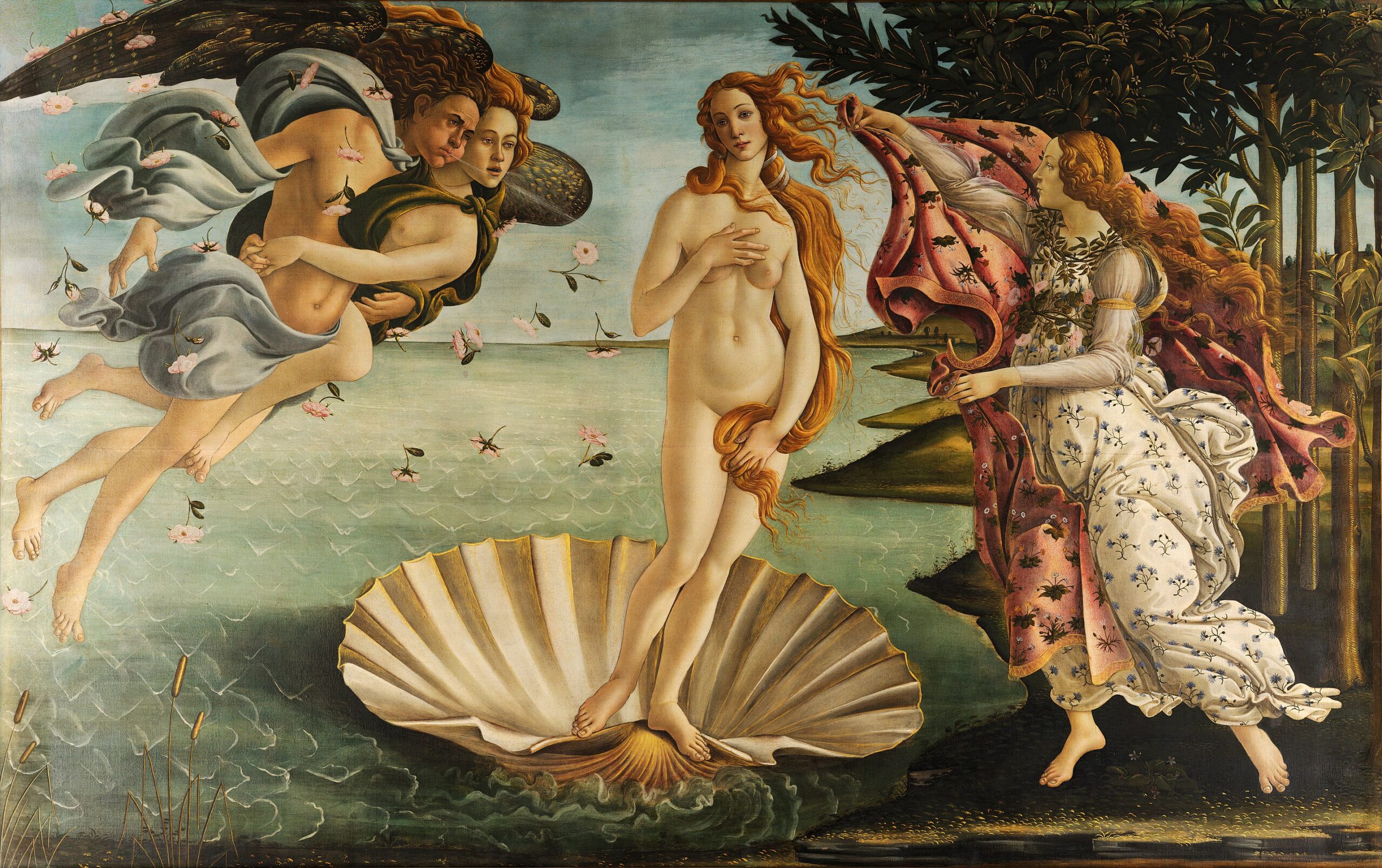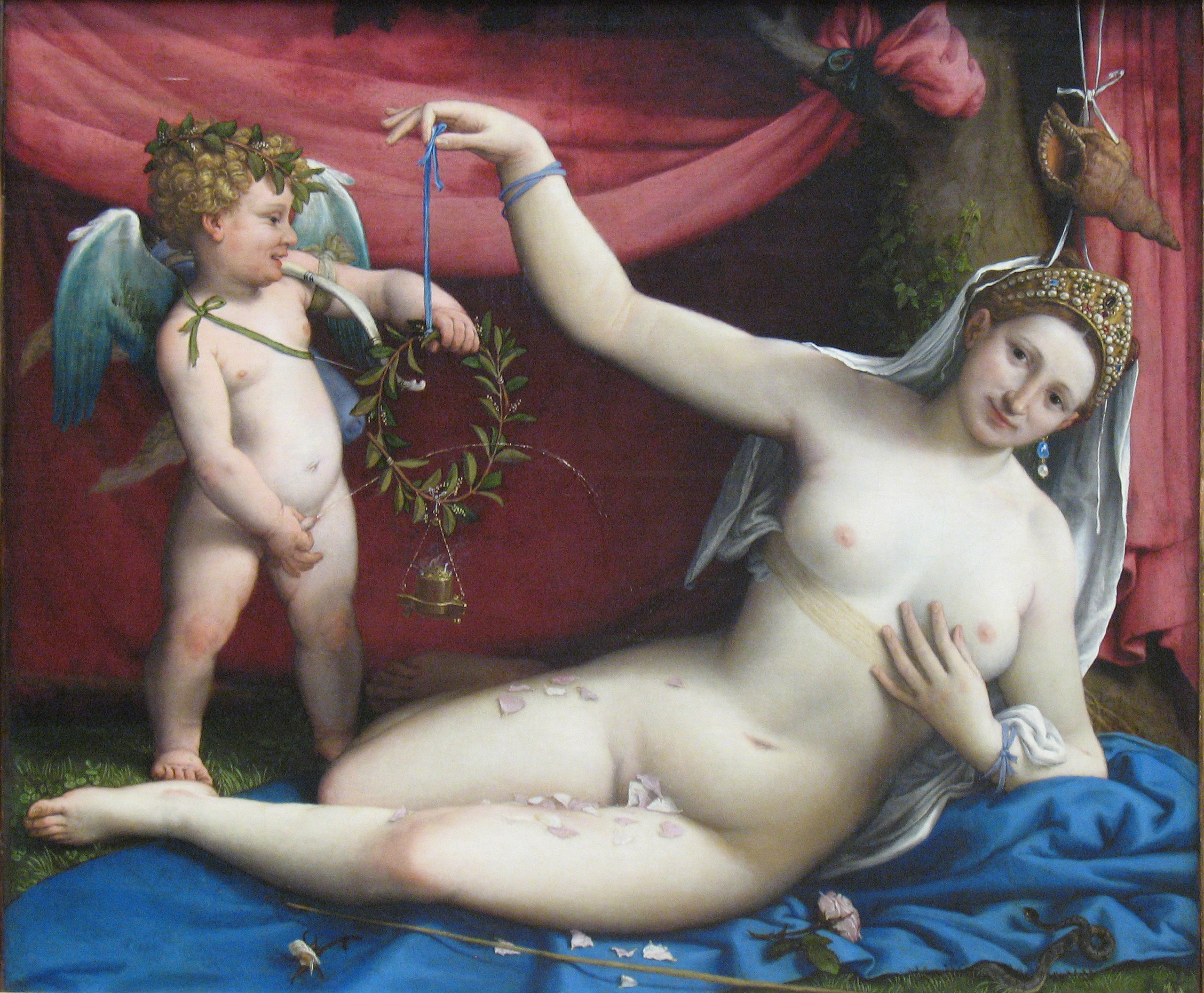Venus was the Ancient Roman counterpart of the Greek goddess Aphrodite (who represented love, eroticism, physical beauty and fertility). Said to have been born of the sea, after Saturn castrated his father Uranus and flung the gonads into the ocean, Venus would go on to make lovers of gods and mortals alike and bear many children. The union between the goddess of love and Mars produced Harmonia, Demos, Phobos and, according to some myths, Cupid. Likewise with Mercury, she conceived Hermaphroditus and with Bacchus, Priapus and Hymen. Her romantic entanglements with mortals included unions with Adonis, the Sicilian King Butes and Prince Anchises.The latter relationship producing Aeneas, hero of Troy and father of the Roman people.
Often depicted with her lovers, at her toilet, shortly after her birth, in triumph and arranging herself in self-admiring poses, Venus was widely represented in post-classical art and was a popular subject for artists of the Italian Renaissance period.
Images: Sandro Botticelli, The Birth of Venus, c. 1484–86, tempera on canvas. 172.5 cm × 278.9 cm (67.9 in × 109.6 in). Galleria degli Uffizi, Florence. Web Gallery of Art.
Lorenzo di Credi, Venus, 1493-94, oil on canvas, 151 x 69 cm, Galleria degli Uffizi, Florence. Web Gallery of Art.
Piero di Cosimo, Venus, Mars, and Cupid, 1490, poplar panel, 72 x 182 cm
Staatliche Museen, Berlin. Web Gallery of Art.
Pietro Perugino, Venus and Cupid, 1497-1500, lead white over silverpoint, crayon and brown wash on gray tinted paper, 254 x 182 mm, Galleria degli Uffizi, Florence. Web Gallery of Art.
Andrea Mantegna, Parnassus, 1487, tempera and gold on canvas, 159 cm × 192 cm (63 in × 76 in), Louvre, Paris. Wikimedia Commons.
Lorenzo Costa the Elder, Venus, 1515-18, oil on poplar, 174 x 76 cm, Szépmûvészeti Múzeum, Budapest. Web Gallery of Art.
Giorgione, Sleeping Venus, c. 1510, oil on canvas, 108 x 175 cm, Gemäldegalerie, Dresden. Web Gallery of Art.
Raphael Santi, Venus and Jupiter, 1517-18, fresco, Villa Farnesina, Rome.
Lorenzo Lotto, Venus and Cupid, mid-1520s, oil on canvas, 92.4 cm × 111.4 cm (36.4 in × 43.9 in), The Metropolitan Museum of Art, New York. Wikimedia Commons.
Girolamo da Treviso the Younger, Sleeping Venus, c. 1523, oil on canvas, 130 x 213 cm, Galleria Borghese, Rome. Web Gallery of Art.
References: Jane Davidson Reid with the assistance of Christ Rohmann, The Oxford Guide to Classical Mythology in the Arts 1300-1900, Volume I, Oxford, Oxford University Press, 1993.
Posted by Samantha Hughes-Johnson.










